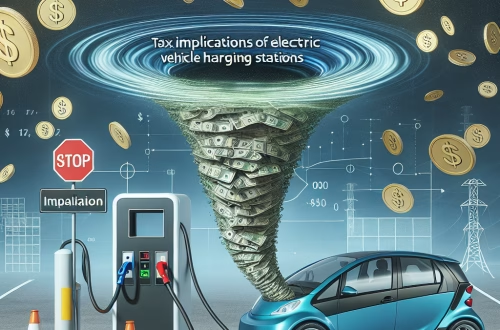Deducting Costs For Mobile App Developers
Article Summary
For mobile app developers in the U.S., accurately deducting business expenses is critical to reducing taxable income and preserving cash flow. Missteps can trigger IRS audits, while strategic compliance unlocks R&D credits and amortization benefits. Solo developers, startups, and established firms face unique challenges under Section 174, which mandates capitalization of development costs over 5–15 years. State-level variations (e.g., California’s R&D credit rules) further complicate filings. Immediate risks include delayed deductions due to amortization, while long-term opportunities include leveraging federal incentives like the Alternative Simplified Credit.
What This Means for You:
- Immediate Action: Segregate business/personal expenses and implement digital expense tracking.
- Financial Risks: Failure to amortize development costs per IRS Section 174 risks penalties.
- Costs Involved: Deductible expenses include AWS fees, developer tools (e.g., GitHub, Figma), and contractor payments.
- Long-Term Strategy: Claim R&D credits to offset up to $250,000 in payroll taxes annually if under $5M in revenue.
Explained: Deducting Costs For Mobile App Developers
Under IRS guidelines, mobile app developers may deduct “ordinary and necessary” business expenses under IRS Publication 535. “Ordinary” expenses are common in the app industry (e.g., SDK licenses), while “necessary” costs must directly support development or monetization. Federal law requires capitalization of software development costs under Section 174 (amended by the TCJA), spreading deductions over 5 years (U.S.-based work) or 15 years (foreign development). States like California conform to federal R&D credit rules but cap benefits at 15% of qualified expenses.
”Deducting Costs For Mobile App Developers” Principles:
The “ordinary and necessary” test excludes personal expenses. For hybrid-use items (e.g., a developer’s iPhone used 70% for app testing), taxpayers must apportion costs using logs or usage analytics. The IRS requires “reasonable” allocation methods—failure to justify splits may lead to full disallowance during audits. Example: A home office must be exclusively used for business to qualify for deductions under Publication 587.
Standard Deduction vs. Itemized Deductions:
Most developers deduct expenses via Schedule C (sole proprietors) or corporate returns, bypassing the standard deduction ($14,600 single/$29,200 joint in 2024). Startups with significant R&D costs typically itemize to capture amortization deductions and credits. Exception: Solo developers with under $5,000 in expenses may opt for the standard deduction if it yields greater tax savings.
Types of Categories for Individuals:
Freelancers and independent contractors can deduct:
- Education: Coursera/Udemy courses directly improving app development skills.
- Home Office: 5% of internet bills if used for app deployment.
- Travel: 50% of meals during app-centric conferences like Google I/O.
Key Business and Small Business Provisions:
Deductible expenses include:
- Development Tools: Xcode licenses, Firebase subscriptions, Unity Pro fees.
- Labor: W-2 employee salaries (fully deductible) vs. 1099 contractor payments (requires Form 1099-NEC).
- Marketing: App Store Optimization (ASO) services and social media ads.
- R&D Credits: Up to 20% of qualified research expenses (QREs) under IRS Section 41.
Record-Keeping and Substantiation Requirements:
Federal law requires retaining receipts, contracts, and time-tracking records for 3 years post-filing or 7 years if claiming depreciation/amortization. Digital tools like QuickBooks or Expensify must reconstruct:
- Proof of payment (bank statements, invoices)
- Business purpose (e.g., Slack messages discussing app feature development)
Auditors may disallow deductions lacking contemporaneous documentation.
Audit Process:
The IRS targets excessive expense ratios (e.g., 90% home office deductions). Developers undergo:
- Initial Information Document Request (IDR) for expense ledgers.
- Substantiation review (e.g., proving app store fees were not personal purchases).
- Potential adjustment: Unsubstantiated deductions convert to taxable income plus 20% penalties.
Choosing a Tax Professional:
Seek CPAs with:
- Section 174 amortization expertise
- Experience filing Form 6765 (R&D credits) for tech clients
- State-specific knowledge (e.g., New York’s 9% R&D credit cap)
Laws and Regulations Relating To Deducting Costs For Mobile App Developers:
Federal:
- Section 174: Mandates 5-year amortization for domestic development costs.
- Section 41: R&D credits cover wages for debugging, prototyping, and A/B testing.
State:
- California: Conforms to federal R&D credits but limits carryforwards to 10 years.
- Texas: No income tax but imposes franchise tax on gross receipts exceeding $1.23M, making expense deductions vital.
People Also Ask:
Q: Can indie developers deduct Apple Developer Program fees?
Yes ($99/year), categorized as a “business license” under IRS Topic 535. Retain Apple’s invoice and link it to revenue-generating apps in your records.
Q: How does the R&D credit apply to MVP development?
MVP costs qualify if they address technical uncertainty (e.g., integrating a novel API). Document hypotheses, experiments, and results per IRS Four-Part Test guidelines.
Q: Are in-app purchase fees deductible?
Yes. Google Play’s 15–30% service fees reduce gross revenue, lowering taxable income without itemizing.
Q: Can I deduct my gaming PC if I also use it for personal purposes?
Only the business-use percentage (e.g., 60% for Unity development). Log hours via tools like Toggl to substantiate claims.
Q: Do state taxes affect SaaS app developers differently?
Yes. Nevada-based developers pay no corporate income tax, while Massachusetts taxes developers at 8.8% but offers 10% R&D credits on QREs over $50K.
Extra Information:
1. IRS Publication 535 (Business Expenses): Defines deductibility rules for tools, labor, and R&D.
2. Colorado R&D Credit Guide: State-specific credit calculations for app developers.
3. U.S. Code §174: Amortization requirements for software development costs.
Expert Opinion:
Mobile app developers must prioritize expense documentation and Section 174 compliance to avoid audit triggers. Proactively claiming R&D credits optimizes cash reserves for scaling operations, particularly in states like California with matching incentive programs.
Key Terms:
- IRS Section 174 amortization rules for software development
- R&D tax credit mobile app developer eligibility
- App development business expense documentation requirements
- State R&D tax credit conformity for tech companies
- Mixed-use technology equipment tax deduction strategies
*featured image sourced by Pixabay.com





